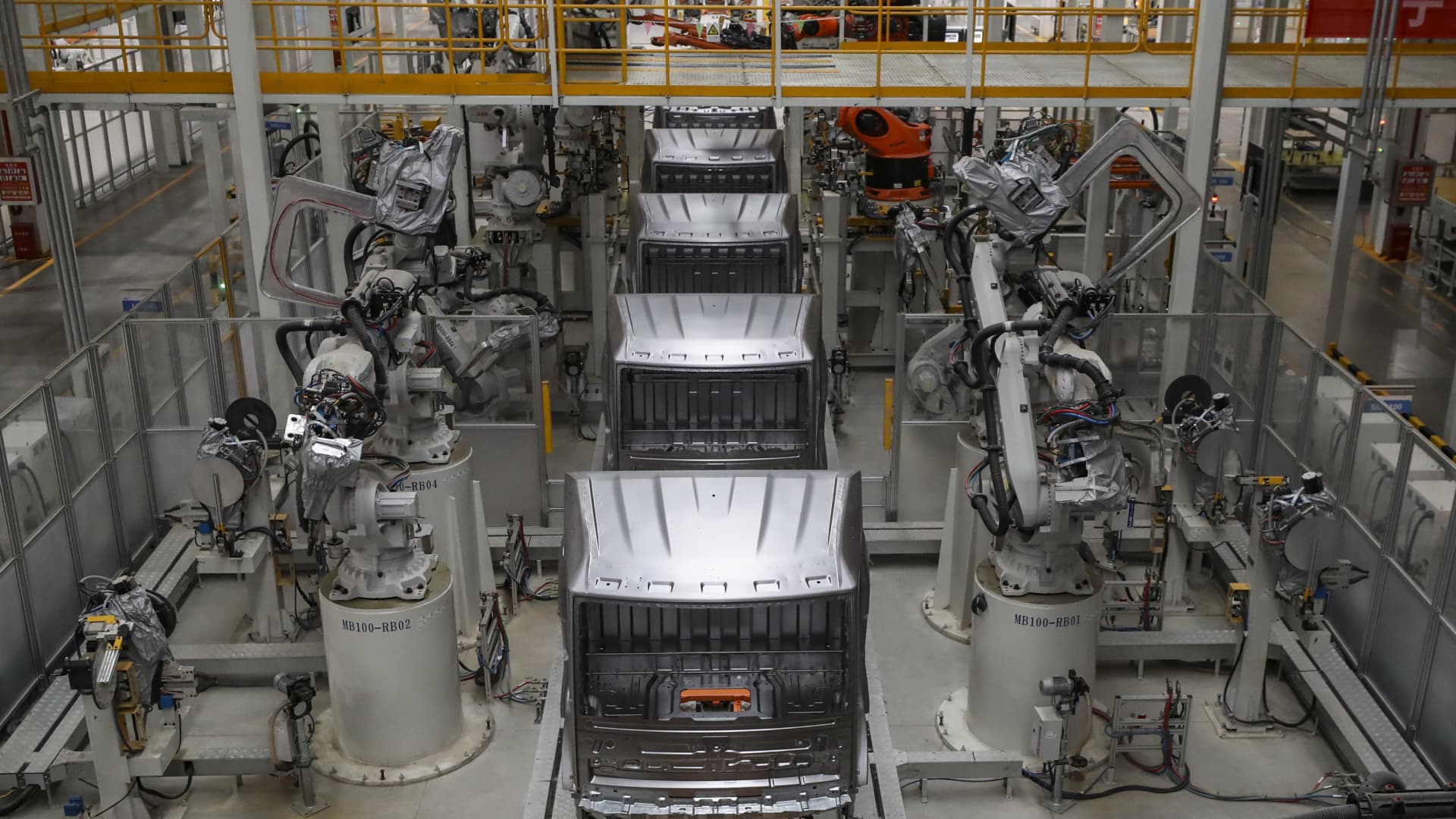Finance
April retail sales, industrial production, investment data

Pictured here is a BYD factory producing new energy-powered trucks in Huai’an, China, on February 21, 2024.
Nurfoto | Nurfoto | Getty Images
BEIJING – China reported data on Friday pointing to slower growth on the consumer side, while industrial activity remained robust.
Retail sales rose 2.3% in April from a year ago, the National Bureau of Statistics said. That was less than the 3.8% increase predicted by a Reuters poll, and slower than the 3.1% pace reported in March.
Industrial production rose 6.7% in April from a year ago, exceeding expectations for 5.5% growth. That was also a clear increase compared to 4.5% in March.
But fixed asset investment rose 4.2% in the first four months of the year, less than the expected 4.6% increase.
Real estate investment accelerated the pace of decline, falling 9.8% year-on-year in the first four months of 2024.
Investments in infrastructure and manufacturing both slowed slightly over the period from levels reported in March.
The urban unemployment rate was 5% in April. The agency previously said it would publish the age breakdown in the days following the general data release.
According to China’s Ministry of Commerce, retail sales rose 6.8% year-on-year during a recent holiday period from April 29 to May 3.
The ministry said retail sales of home appliances rose 7.9% in the period, while those of cars rose 4.8%, boosted by nationwide trade-in incentives.
“Key indicators of industry, exports, employment and prices improved overall, while new driving forces persisted[ing] rapid growth,” the agency said.
Some consumers uncertain about their future income and other aspects will remain cautious about their spending, says JLL’s Bruce Pang.
But he noted that improved employment figures and growth in services consumption indicated that retail sales could improve in the future.
The statistics agency said in a statement that April’s figures were influenced by the May 1 Labor Day holiday and last year’s high base.
An agency spokeswoman, Liu Aihua, pointed out that last year’s multi-day May 1 Labor Day holiday included two days in April. This year the holidays didn’t start until May 1.
She said the real estate sector is still in an adjustment period.
China was also scheduled to kick off a six-month program on Friday to issue decades-long bonds to finance strategic projects. Oxford Economics expects that most of the economic impact will only be felt in the first half of next year.
Liu noted that issuing ultra-long bonds could also help boost market confidence.
Mixed picture so far
Other data released for April indicates a mixed growth picture.
Exports grew by 1.5% year-on-year in April and in line with expectations, while imports grew much faster than expected, at 8.4%.
In another indication of stabilizing domestic demand, consumer prices rose last month.
But a measure of factory-level prices continued to fall. New credit data for April fell to levels not seen in at least two decades, largely due to changes in data measurement, but also due to sluggish demand from businesses and households for loans for the future.
A prolonged slump in the property sector has yet to show signs of a significant turnaround, with many pre-sold apartments still under construction. More cities have loosened restrictions on home purchases in recent weeks in an effort to boost sales.
Details on housing policy expected
Officials from the Housing Ministry, the central bank and the financial regulator will hold a press conference on Friday afternoon on policies to support housing delivery.
Dan Wang, chief economist at Hang Seng Bank (China), said in an interview late last month that she expected the Chinese real estate market to stabilize by the end of next year.
“It actually seems to me that the policy has succeeded, in a very brutal way because it’s happening too quickly, because it essentially puts an end to speculation,” she said.
Although the real estate sector’s slump has weighed heavily on middle-class wealth, she suggests that the overall economy has held up.
“Aside from data quality, it appears that the economy can offset a major loss in the housing market through industrial investment and production,” Wang said. “It has shown some strength in the way the Chinese economy is organized and how its industrial policy has been conducted.”
China’s official GDP grew 5.3% in the first quarter from a year ago, better than expectations for a 4.6% increase. The country has set a target of achieving GDP growth of around 5% by 2024.
The EU Chamber of Commerce in China told reporters last week that recent economic pressures appear cyclical, and that it is more important for foreign companies to see an increase in domestic demand than for industrial investment.
According to China’s Ministry of Commerce, retail sales rose 6.8% year-on-year during a recent holiday period from April 29 to May 3.
The ministry said retail sales of home appliances rose 7.9% in the period, while those of cars rose 4.8%, boosted by nationwide trade-in incentives.











